Dan Simmons is an American science fiction and horror writer. He is the author of the Hyperion Cantos and the Ilium/Olympos cycles, among other works which span the science fiction, horror, and fantasy genres, sometimes within a single novel. Simmons's genre-intermingling Song of Kali (1985) won the World Fantasy Award. He also writes mysteries and thrillers, some of which feature the continuing character Joe Kurtz.
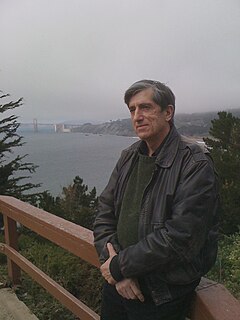
Kevin Wayne Jeter, known both personally and professionally as K. W. Jeter, is an American science fiction and horror author known for his literary writing style, dark themes, and paranoid, unsympathetic characters. He has written novels set in the Star Trek and Star Wars universes, and has written three sequels to Blade Runner.

Pulp magazines were inexpensive fiction magazines that were published from 1896 to the late 1950s. The term pulp derives from the cheap wood pulp paper on which the magazines were printed. In contrast, magazines printed on higher-quality paper were called "glossies" or "slicks". The typical pulp magazine had 128 pages; it was 7 inches (18 cm) wide by 10 inches (25 cm) high, and 0.5 inches (1.3 cm) thick, with ragged, untrimmed edges.
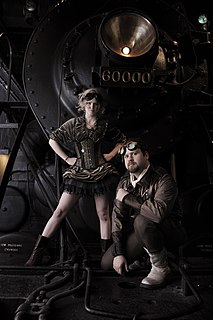
Steampunk is a retrofuturistic subgenre of science fiction that incorporates technology and aesthetic designs inspired by 19th-century industrial steam-powered machinery. Although its literary origins are sometimes associated with the cyberpunk genre, steampunk works are often set in an alternative history of the Victorian era or the American "Wild West", where steam power remains in mainstream use, or in a fantasy world that similarly employs steam power.

The Time Machine is a science fiction novella by H. G. Wells, published in 1895 and written as a frame narrative. The work is generally credited with the popularization of the concept of time travel by using a vehicle or device to travel purposely and selectively forward or backward through time. The term "time machine", coined by Wells, is now almost universally used to refer to such a vehicle or device.

Childhood's End is a 1953 science fiction novel by the British author Arthur C. Clarke. The story follows the peaceful alien invasion of Earth by the mysterious Overlords, whose arrival begins decades of apparent utopia under indirect alien rule, at the cost of human identity and culture.
Genre fiction, also known as popular fiction, is a term used in the book-trade for fictional works written with the intent of fitting into a specific literary genre, in order to appeal to readers and fans already familiar with that genre.

Scientific romance is an archaic, mainly British term for the genre of fiction now commonly known as science fiction. The term originated in the 1850s to describe both fiction and elements of scientific writing, but it has since come to refer to the science fiction of the late nineteenth and early twentieth centuries, primarily that of Jules Verne, H. G. Wells and Arthur Conan Doyle. In recent years the term has come to be applied to science fiction written in a deliberately anachronistic style as a homage to or pastiche of the original scientific romances.

The Time Ships is a 1995 hard science fiction novel by Stephen Baxter. A canonical sequel to the 1895 novella The Time Machine by H. G. Wells, it was officially authorised by the Wells estate to mark the centenary of the original's publication. The Time Ships won critical acclaim. It won the John W. Campbell Memorial Award and the Philip K. Dick Award in 1996, as well as the British Science Fiction Association Award in 1995. It was also nominated for the Hugo, Clarke, and Locus Awards in 1996.

Morlocks are a fictional species created by H. G. Wells for his 1895 novel, The Time Machine, and are the main antagonists. Since their creation by H. G. Wells, the Morlocks have appeared in many other works such as sequels, films, television shows, and works by other authors, many of which have deviated from the original description.
Social science fiction is a subgenre of science fiction, usually soft science fiction, concerned less with technology/space opera and more with speculation about society. In other words, it "absorbs and discusses anthropology" and speculates about human behavior and interactions.
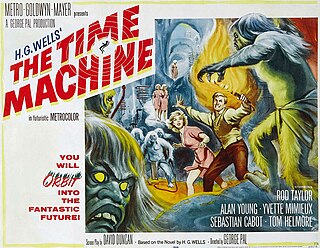
The Time Machine is a 1960 American science fiction film in Metrocolor from Metro-Goldwyn-Mayer, produced and directed by George Pal, that stars Rod Taylor, Yvette Mimieux, and Alan Young. The film was based on the 1895 novella of the same name by H. G. Wells that was influential on the development of science fiction.

Bert Gentry Lee is an American scientist, currently chief engineer for the Planetary Flight Systems Directorate at the Jet Propulsion Laboratory, and science fiction writer. He had engineering oversight responsibility for the twin rover missions to Mars that landed in January 2004, the Mars Reconnaissance Orbiter (MRO) in 2006, and the Deep Impact and Stardust missions. He was also the chief engineer for the Galileo project from 1977–1988 and director of science analysis and mission planning during the Viking projects.

The lost world is a subgenre of the fantasy or science fiction genres that involves the discovery of an unknown world out of time, place, or both. It began as a subgenre of the late-Victorian adventure romance and remains popular into the 21st century.
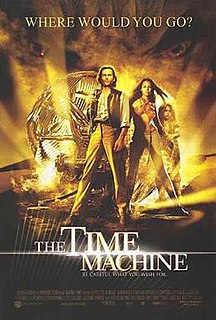
The Time Machine is a 2002 American science fiction film loosely adapted from the 1895 novel of the same name by H. G. Wells and the screenplay of the 1960 film of the same name by David Duncan. Arnold Leibovit served as executive producer and Simon Wells, the great-grandson of the original author, served as director. The film stars Guy Pearce, Orlando Jones, Samantha Mumba, Mark Addy, and Jeremy Irons, and includes a cameo by Alan Young, who also appeared in the 1960 film adaptation. The film is set in New York City instead of London, and contains new story elements not present in the original novel nor the 1960 film adaptation, including a romantic backstory, a new scenario about how civilization was destroyed, and several new characters such as an artificially intelligent hologram and a Morlock leader.
Morlocks are a fictional species in the H. G. Wells novel The Time Machine.
Angry Robot Books is a British-based publishing house dedicated to producing modern adult science fiction and fantasy, or as they call it “SF, F and WTF?!?”. The Nottingham-based company first released books in the UK in 2009, and since September 2010 has simultaneously been publishing its titles in the US as well, as a distributed client of Random House. All titles are released as paperbacks and eBooks.
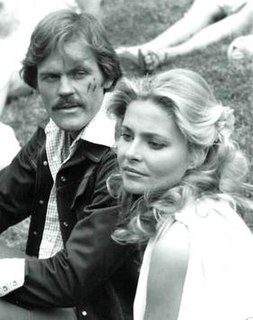
The Time Machine is a 1978 American made-for-television science fiction-adventure film produced by Sunn Classic Pictures as a part of their Classics Illustrated series. Despite updating the plot to take place in the late 1970s, the film, which stars John Beck and Priscilla Barnes, was intended to be a more faithful plot recreation of the original 1895 novella by H.G. Wells—as opposed to the 1960 film adaptation, which took several liberties. The film was broadcast November 5, 1978 during the November Sweeps on NBC.
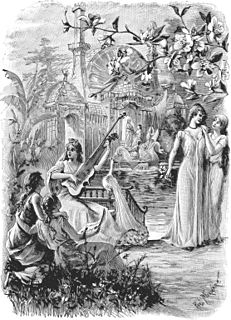
Evolution has been an important theme in fiction, including speculative evolution in science fiction, since the late 19th century, though it began before Charles Darwin's time, and reflects progressionist and Lamarckist views as well as Darwin's. Darwinian evolution is pervasive in literature, whether taken optimistically in terms of how humanity may evolve towards perfection, or pessimistically in terms of the dire consequences of the interaction of human nature and the struggle for survival. Other themes include the replacement of humanity, either by other species or by intelligent machines.

The far future has been used as a setting in many works of science fiction. The far future setting arose in the late 19th century, as earlier writers had little understanding of concepts such as deep time and its implications for the nature of humankind. Classic examples of this genre include works such as H.G. Wells' The Time Machine (1895) or Olaf Stapledon's Last and First Men (1930). Recurring themes include themes such as utopias, eschatology or the ultimate fate of the universe. Many works also overlap with other genres such as space opera, science fantasy or apocalyptic and post-apocalyptic fiction.















